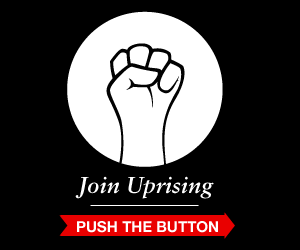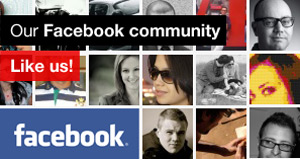How to have power and influence on the web in 2012
Posted on 20th Dec 2011 by Scott Goodson in Tips and TricksLet’s face it. 2011 has been one of the most eventful years to date. It’s been a time of numerous uprisings, protests and upheavals. But what’s really interesting and different about uprisings today is that individuals are starting their own movements in a bid to change the world for the better.
In fact, no period in history has seen so much ‘power to the people’. Each protest, each revolution, and each rebellion – they’ve all triggered by individuals who start new uprisings for a purpose, advocating for a brand or against state oppression, corruption, consumerism, inequality and police brutality.
Take the guy who took down Kayak and Lowe’s with his computer. Or take the Occupy Wall Street (OWS) movement. Or the North Africa rebellions. Or even the popular unrest in Greece. It’s been a year of revolution as people were prepared and able to fight for change.
Now technology and social media create the reach of the movements. But they are just a part of the movement infrastructure, the media channel (albeit much cooler than TV). Social media doesn’t supersede Movements. Your own movement needs social media, but more than that it needs a higher purpose.
TIME magazine agrees. It recently revealed the collective ‘protestor’ as its ‘Person of the Year’ for 2011, citing the change brought about by street demonstrations from New York and Spain to the Middle East.
The shared honor is usually handed out to individuals with last year’s winner being Facebook co-founder and CEO Mark Zuckerberg. But given the international focus on this year’s protest movements, TIME felt it was worthy to give ‘the protestor’ a special mention. The meaning behind this is undoubtedly hinting at individual people power being the main theme of the past 12 months.
But why has 2011 been such a year of unrest?
Part of the answer can be attributed to the ever-growing global economic crisis. People are fed up with the financial meltdown and want to see positive change. Financial issues in America are affecting nations elsewhere. We’re all suffering in some way or another.
TIME’s top editor Rick Stengel said in a statement published last week: “Everywhere, it seems, people said they’d had enough… They dissented; they demanded; they did not despair, even when the answers came back in a cloud of tear gas or a hail of bullets. They literally embodied the idea that individual action can bring collective, colossal change. And although it was understood differently in different places, the idea of democracy was present in every gathering.”
But protesting is nothing new. We’ve seen protests in previous times but never on the same scale as today. What makes the uprisings of 2011 so different?
2011 has been a year of change and global movements sparked by individuals because of the web. Movements that used to be impossible are now achievable thanks to mass communication.
Just one person is able to have incredible influence and power on the web. They can start a small sustainable movement that then builds momentum and turns into a global force to be reckoned with. We all have the power to start our own movements and shout them to the world, gathering supporters along the way. Some have greater influence than others. But the playing field is still pretty flat. So why not take a page out of the playbooks of the best.
Apple for example has grown their loyalty and fan base globally by broadening their appeal and their network globally, creating thousands of opportunities for people to interact with the Apple Movement – not just in technology but in culture, music, film, tv —everything, including the immaculately designed clubhouse for fans — the Apple Store.
How you can make a huge impact is by building your own brand movement online. We can create our own online communities, launch our own websites and directly communicate with a worldwide audience through social media. We can make such an impact because of the web that we’re causing a huge shift in our culture and societies.
Measure the influence of your movement? There’s an app for that.
PeekAnalytics measures not only the size of the consumer audience, but their quality in terms of their network size, social participation and their ability to spread a message further. In this table we’ve summarised pull, total audience, identified consumer count, and consumer ratio.
According to Haydn Shaughnessy @haydn1701 these are the top 10 influencers in social media:
- Chris Brogan
- Ann Handley
- Gary Vaynerchuk
- Robert Scoble
- Scott Stratten
- Reg Saddler
- Jason Falls
- Scott Monty
- Mari Smith
- Pam Moore
He continues: “Individuals matter in a way that’s never been possible before. I’ve been discussing with personal data specialists PeekYou how we can understand this phenomenon better. PeekYou’s mission is to render the web into a gallery of identifiable people. So instead of those well known but mostly obscure names out there, you start to get the real measure of people”
Of course critics will question the algorithm on this to ensure the list is truly accurate. “There were objections too – that numbers don’t take account of quality and that PeekYou’s tools might be limited. Both those objections are valid to a point. I’m open to incorporating other tools but any tool is limited and numbers have a value if we’re careful about how we interpret them.”
Klout also measures your Klout but there are questions here too.
Jason, StrawberryFrog’s social media wunderkid says: “While Klout defines itself as a measure of online influence, I believe the algorithm they use stresses quantity over quality. In other words, the amount of people you influence is equally, if not more, important than who those people actually are. Furthermore, the algorithm doesn’t account for topical disparities. Is someone who is a thought-leader in the political sphere more influential than the curator of the Justin Bieber fan club? Of course! For now, I believe Klout lacks an appreciation for the hierarchy that embodies real world influence. As a result, it is entirely possible for a 13 year old girl who Tweets about American Idol to be more “influential” than either of us. It’s imperative to view your Klout profile as but one piece of information that must be combined with several others to truly measure your digital influence. As you know, it’s more than a numbers game.”
Keeping the gestalt in mind, there are a few tangible ways to improve your score:
1. Integrate all of your accounts
Ensure you’ve connected not just your Twitter account, but also your Facebook, LinkedIn and any other relevant networks such as LinkedIn, Google +, Tumblr, or Instagram.
2. The Golden Rule
It seems elementary: treat others like you want to be treated. Pose questions to your Twitter followers. RT others & add your input. Engaging with with other people will engender reciprocity.
3. Quality trumps Quantity
Fortunately, you’ve got this one covered. As Klout improves the algorithm for approximating influence, it will ideally begin to place more weight on who engages with your content. If not, I reckon the tool won’t be worth your time.
From a brand perspective, Klout is a whole ‘nother bag of tricks. They’ve established the Klout Perks program to target influential community members. The most successful Klout Perks integration I’ve seen was alongside the US launch of Spotify. In this case, having a high Klout score was the prerequisite to being one of the first invitees.
All of this underlines how much you, as an individual, can do to identify and spark your own movement. And your own movement will be the most important movement you will launch.
Keep this in mind when you think ahead for 2012. Can we see more people starting their own movements, revolutions, stand-offs, and manifestations at their fingertips? You bet we can. It’s an exciting time and today’s movements will make an impression for many generations to come.
blog comments powered by Disqus






